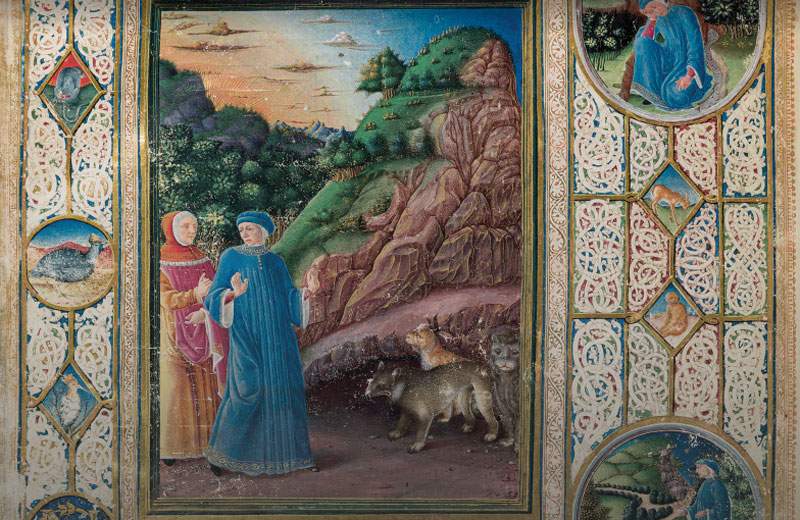On the occasion of the 700th anniversary of Dante Alighieri’s death, Franco Cosimo Panini Editore, Biblioteca Apostolica Vaticana and Treccani present the most beautiful facsimile of the Divine Comedy ever.
There are about 850 manuscripts of the Divine Comedy, kept in libraries in various parts of the world, but the most precious masterpiece of the Renaissance is the Dante Urbinate or Latin Codex Urbinate 365. The volume is an expression of the splendor and magnificence of the seigniory of Federico da Montefeltro, Duke of Urbino: it is in fact a masterpiece made of the finest parchment and richly decorated with miniatures, imposing in size, format, number of papers and binding.
The codex was commissioned from Matteo de’ Contugi, a famous copyist already active for the Gonzaga and Este families, and from Guglielmo Giraldi, a miniaturist of the Ferrarese school, with whom Franco dei Russi also collaborated. Giraldi and Russi worked on the miniatures of Inferno and Purgatorio between 1478 and 1482, the year of the duke’s death. Upon his death, the decoration of the codex was interrupted, but then resumed in the early seventeenth century, when Francesco Maria II della Rovere, the last duke of Urbino, had the miniatures completed by Valerio Mariani and provided the volume with a yellow brocade binding, which was later replaced.
In the Urbino Dante thus coexists medieval culture, the Renaissance art of the miniatures of the first two canticles, and the seventeenth-century art of the Paradiso.
The facsimile faithfully and fully reproduces all the features of Federico da Montefeltro’s Divine Comedy; it was reproduced in a limited edition of 590 copies. The fidelity to the original is taken care of in every detail, from the chromatics to the material values, the miniatures in vivid colors, the reproduction of the golds, laid out in foil and powder according to the different gildings in the book. The execution of the binding is entrusted to expert artisan workshops that use the same techniques in use at the end of the 15th century: specialized workers such as bookbinders and silversmiths, goldsmiths and engravers.
Thanks to a collaboration with the Treccani Institute, the print run, now almost sold out, has been able to perfect itself according to philological reproductive criteria, and the last copies are available through Treccani.
The facsimile of the Dante Urbinate is part of the series La Biblioteca Impossibile, a collection dedicated to the Renaissance that was inaugurated in 1995 with the Bible of Borso d’Este and has continued with the reproduction of other absolute masterpieces of the miniature.
For more info: www.danteurbinate.it
 |
| Dante Urbinate, the most beautiful and precious Divine Comedy: here's what it looks like |
Warning: the translation into English of the original Italian article was created using automatic tools. We undertake to review all articles, but we do not guarantee the total absence of inaccuracies in the translation due to the program. You can find the original by clicking on the ITA button. If you find any mistake,please contact us.